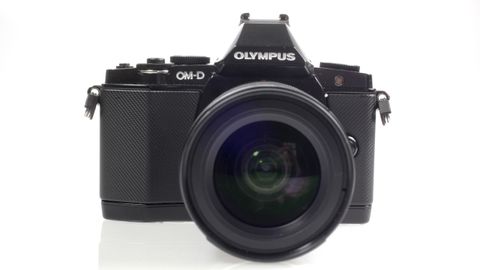Why you can trust TechRadar
Our initial impressions of this camera were very promising, and after having spent a lot more time with it now, we're happy to report that its charms still manage to hold our attention for the most part, especially now we have had a chance to fully examine image quality.
While its retro looks may not appeal to everyone, for original OM users, it will certainly be a treat. Weatherproofing and ruggedness of the camera mean it feels as if it is built to last after taking some serious abuse, so we can also see street photographers falling in love with this camera.
Introducing an in-built EVF to this camera elevates it status above the PEN, taking it (despite Olympus's own protestations) almost into semi-pro territory.
The wide range of compatible Micro Four Thirds lenses now available on the market - not forgetting those made by Panasonic and third party manufacturers such as Sigma, make purchasing a Micro Four Thirds camera a very interesting proposition. It's when using different optics that the versatility of the OM-D is truly revealed.
We liked
The excellent viewfinder shows a marked improvements on those we've used before, while new art filters and variations on existing ones show how creative you can be with this camera. Image quality, in certain situations, is excellent and comparable to DSLR quality, while being confined within a much more portable device.
We disliked
There are still a few little bugbears that could do with being ironed out. For such an expensive camera, the buttons could have been metal to add a better finish, while some of them were also a little slow and unresponsive.
Final verdict
The Olympus OM-D is of course an expensive proposition, at £1,149 for the single lens kit or £999 body-only, but when you consider all of the improvements that have been made, we think the extra expense when compared with an E-P3 is just about worth it.
It's also worth pointing out that one of its biggest rivals, the Fuji X Pro1, is currently retailing for around £1,500 body only, making the E-M5 suddenly seem more attractive.
However, having said all of that, we can't help but feel that the E-M5 is a little bit 'unfinished'. As this is the first camera in the new OM-D line-up, it seems as if there is some work to do to make this camera live up to its full potential. For example, the plastic buttons feel like an afterthought.
Olympus has been guilty of this before, with the original PEN (E-P1) being superseded by the E-P2 only a few months after, packed with better features. So, for that reason, we'll be very excited to see how Olympus develops this line going forward, and will be watching with anticipation.
Olympus has delivered a fantastic camera, which, along with its premium CSC cohorts, has the potential to be a game-changer, stealing focus from certain areas of the DSLR market. There's a lot to love about the OM-D, especially the great image quality and its retro appeal - it will be interesting to see how sales perform.
Amy has been writing about cameras, photography and associated tech since 2009. Amy was once part of the photography testing team for Future Publishing working across TechRadar, Digital Camera, PhotoPlus, N Photo and Photography Week. For her photography, she has won awards and has been exhibited. She often partakes in unusual projects - including one intense year where she used a different camera every single day. Amy is currently the Features Editor at Amateur Photographer magazine, and in her increasingly little spare time works across a number of high-profile publications including Wired, Stuff, Digital Camera World, Expert Reviews, and just a little off-tangent, PetsRadar.


